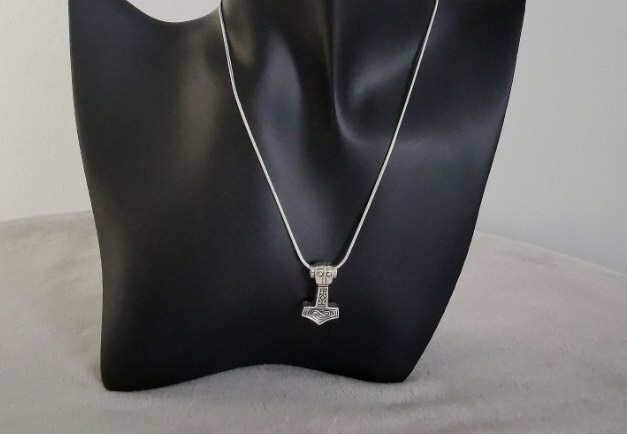In Norse mythology, Mjölnir is the legendary weapon of Thor, the god of thunder. According to ancient texts such as the Prose Edda and the Poetic Edda, Thor used his mighty hammer to protect Asgard and Midgard from giants and other threats. The name Mjölnir is believed to be derived from Old Norse, meaning “crusher” or “grinder,” which perfectly describes its function in battle.The creation of Mjölnir is a fascinating tale. It was forged by the dwarven brothers Sindri and Brokkr as part of a wager with the trickster god Loki. Despite Loki’s interference, the dwarves successfully crafted Mjölnir, though its handle was shorter than intended. Despite this flaw, the hammer became Thor’s ultimate weapon, capable of summoning lightning, returning to his hand after being thrown, and even resurrecting the dead.
Mjölnir was not just a tool of destruction; it was also a symbol of protection and blessing. The hammer was used in various ceremonies, including weddings, births, and oaths. Norse warriors and common folk alike wore hammer-shaped amulets for protection, believing that Thor’s power could safeguard them from harm.In Viking society, Mjölnir represented order and stability. It was seen as a force against chaos, as Thor often battled the giants, who symbolized disorder and destruction. This idea was so strong that even after the Christianization of Scandinavia, many Norse people continued to wear Mjölnir pendants, sometimes alongside Christian crosses, as a way to honor their ancestral beliefs while adapting to new religious influences.
Mjölnir is more than just a weapon; it is a symbol of various concepts deeply rooted in Norse culture. Firstly, it represents strength and power. Thor, as the mightiest of the gods, wields it with unmatched force, demonstrating the importance of physical and moral strength.
Secondly, Mjölnir symbolizes protection. In myths, Thor uses his hammer to shield the gods and humans from dangerous forces. This protective quality made it a favored emblem among Vikings, who sought Thor’s blessing before battle.Thirdly, it embodies justice and righteousness. Thor was often depicted as a god who upheld the cosmic order, ensuring that evil did not prevail. His hammer was the tool through which he enforced this divine justice.
Thor’s hammer has not been confined to the past; it has found a powerful place in modern culture, particularly through literature, comics, and films. The most prominent example is Marvel’s Thor, introduced in the 1960s. In the Marvel Universe, Mjölnir retains many of its mythological traits, including its ability to return to its wielder and summon storms. However, Marvel introduced an additional element: the enchantment that only those deemed “worthy” can lift the hammer. This concept has sparked widespread discussion and intrigue among fans, leading to memorable moments in pop culture, such as Captain America wielding Mjölnir in Avengers: Endgame.Beyond comics and films, Mjölnir remains a symbol of Norse heritage. Many people today wear hammer pendants as a way to connect with their ancestry or express admiration for Norse mythology. The hammer is also used in neo-pagan and religious practices, where it is seen as a sacred symbol of Thor’s protection.
The appeal of Mjölnir lies in its timeless themes—strength, protection, and justice. Whether in ancient Viking societies or modern superhero narratives, these qualities resonate deeply with people. Thor’s hammer is not just a mythological weapon but a powerful representation of ideals that humanity continues to value.
As interest in Norse mythology grows, Mjölnir’s legacy only strengthens. It serves as a reminder of a rich cultural history and continues to inspire new generations through storytelling, art, and popular media. From ancient carvings to blockbuster films, Thor’s hammer remains one of the most enduring and recognizable symbols in human history.


